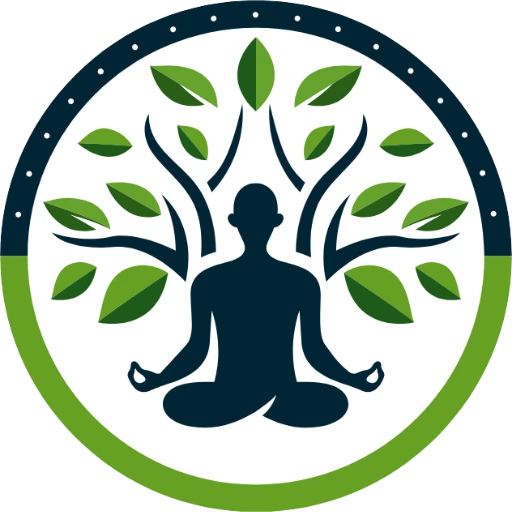The Law of Rhythm is a universal principle that suggests everything in life moves in cycles and has a natural rhythm. Just like the seasons change and the tides rise and fall, life experiences and personal growth can also follow this rhythmic pattern.
Have you ever noticed life’s natural ebb and flow?
It’s like riding waves. Up and down, high and low.
This isn’t random.
It’s the Law of Rhythm in action.
This law is everywhere.
In the changing seasons. The tides. Even in us.
It’s a universal rhythm that dances through our lives.
Understanding this can change how you see everything.
From the way you handle emotions to how you approach your goals.
Let’s investigate how we can best leverage this rhythm.
See how it moves us, shapes us.
Ready to explore the Law of Rhythm?
What is the Law of Rhythm?

The Law of Rhythm suggests that everything in life moves in cycles, similar to the ebb and flow of the ocean’s tides.
It’s a pattern I’ve noticed in my own life.
There are times of intense activity and growth, followed by periods of rest and introspection.
It’s like nature’s seasons.
Each phase, whether it’s the vibrant growth of spring or the quiet stillness of winter, has its purpose and beauty.
This law deeply influences our internal world too.
We all go through emotional highs and lows.
Understanding this law has helped me accept that feeling down is just as natural as feeling up.
It’s a cycle, and like all cycles, it changes.
In practical terms, the Law of Rhythm teaches us to flow with life’s natural cycles, not against them.
When things are going well, it’s a time to push forward.
When facing challenges, it’s often a cue to slow down, reflect, and recharge.
So, how does the Law of Rhythm show up in your life?
Can you identify its patterns in your daily routines, emotional states, or personal growth phases?
The Law of Rhythm is the eleventh law in our series that collectively offer a deeper understanding of our universe’s spiritual mechanics. Here’s a reminder of all 12 laws we’re exploring:
- Law of Divine Oneness
- Law of Vibration
- Law of Correspondence
- Law of Attraction
- Law of Inspired Action
- Law of Perpetual Transmutation of Energy
- Law of Cause and Effect
- Law of Compensation
- Law of Relativity
- Law of Polarity
- Law of Rhythm (this article)
- Law of Gender
Each law is a piece of a larger puzzle, and understanding one helps us to understand the others better.
Law of Rhythm: Navigating Life’s Highs and Lows

Life, much like nature, follows a rhythmic pattern of highs and lows.
During high periods, when everything seems to be going our way, it’s easy to feel invincible.
These are times of growth, creativity, and progress.
In my life, I’ve learned to embrace these moments, using them to advance my goals and savor the joys of success.
However, it’s also crucial to remember that these highs are part of a cycle.
They’re not permanent, which is not a cause for pessimism, but a reminder to cherish these times.
Conversely, the low periods can be challenging.
They often bring feelings of stagnation or sadness.
But, just like winter leads to spring, these lows are temporary and necessary for growth.
They offer a chance to rest, reflect, and learn.
In my own journey, embracing the lows has taught me resilience and given me space to reassess and realign with my goals.
The key is balance.
We can maintain a more balanced perspective by recognizing that life naturally oscillates between highs and lows.
This understanding helps us to stay grounded during good times and hopeful during tough times.
It’s flowing with life’s rhythm, not fighting against it.
Law of Rhythm Practical Tips

Life can be unpredictable, but we can try to navigate it more smoothly by understanding and aligning with the Law of Rhythm.
Here are some practical tips that I’ve found helpful:
1. Mindful Observation
Observing nature’s rhythms can be a great exercise in mindfulness.
Start by paying attention to the natural cycles around you.
The rise and fall of the sun each day, the changing phases of the moon, or even the predictable ebb and flow of the tides can all serve as reminders of the rhythmic nature of life.
This observation practice helps attune oneself to the concept of life’s cycles, fostering a deeper connection with the natural world.
Mindfulness extends beyond just observing nature. It involves tuning into your own life’s rhythms.
Notice when you feel most energetic or creative and when you feel the need to retreat and reflect.
This awareness can help you align your activities with your natural energy levels, making your daily life more harmonious and less stressful.
2. Journaling
Journaling is a powerful tool for tracking personal rhythms and patterns.
You can start noticing trends by regularly writing down your thoughts, feelings, and experiences.
You might find that you’re more energetic or inspired during certain times of the day, month, or even year.
This insight can be invaluable for planning and maximizing your productivity and well-being.
Additionally, journaling offers a space for reflection during different phases of your rhythm.
During low periods, it can be a means of processing emotions and thoughts.
In high periods, it can help you capture ideas and plan for future projects.
Embracing journaling as a regular practice can enhance your understanding of your personal cycles and how they interact with the broader Law of Rhythm.
3. Embracing Change
Change is a constant in life, and embracing it is key to harmonizing with the Law of Rhythm.
During low phases, instead of resisting, remind yourself that these periods are temporary and essential for growth.
They are often times for introspection and recharging.
Embracing these periods can make transitions smoother and less distressing.
Conversely, during high phases, it’s important to take full advantage of these times.
Utilize your energy for creative endeavors, advancing goals, or expanding your horizons.
Remember, these times are also temporary, so making the most of them is crucial.
Embracing change in all its forms allows for a more fluid and less resistant journey through life’s rhythmic cycles.
4. Balanced Living
Striving for balance in daily life is essential for staying in tune with the Law of Rhythm.
This means not just focusing on work or activities but also ensuring you have adequate rest and leisure time.
For example, after a period of intense work, it’s important to allow yourself time to unwind and relax.
This balance prevents burnout and keeps you aligned with your natural rhythms.
Balanced living also means paying attention to all aspects of your life – physical, emotional, and spiritual.
Ensuring that each area is given attention can lead to a more fulfilled and harmonious life.
For instance, while you may be busy with work, finding time for exercise, hobbies, or spending time with loved ones is equally important for maintaining a balanced life rhythm.
5. Listening to Your Body
Your body is often the best indicator of where you are in your life’s rhythm.
It sends signals when you need to slow down or when you’re ready to ramp up activities.
If you feel exhausted, it might be an indication that you’re in a low phase and need rest.
Conversely, feeling energized can signal a high phase, where you can take on more challenging tasks or new projects.
It’s important to heed these signals and adjust accordingly. Ignoring them can lead to stress, burnout, or health issues.
For instance, if you’re feeling tired, instead of pushing through with caffeine or other stimulants, consider taking a short break or adjusting your schedule to allow for more rest.
Listening to your body and respecting its rhythms is a crucial step in harmonizing with the natural flow of life.
6. Adapting to Life’s Cycles
Life’s rhythms require flexibility and adaptability.
When you find yourself in a phase of productivity and growth, seize the opportunity to tackle new challenges and advance your goals.
These are the times to push boundaries and explore new territories.
However, it’s also important to be prepared for slower phases, where the focus might shift towards reflection, planning, and conserving energy.
Adapting to these cycles involves recognizing and accepting that not every period will be one of high energy or visible progress.
Sometimes, the most important work happens internally during quieter times.
Being flexible and adaptable allows you to make the most of each phase in your life’s rhythm, leading to a more balanced and fulfilling journey.
7. Positive Mindset
Maintaining a positive mindset is crucial for navigating the highs and lows of life’s rhythm.
This doesn’t mean ignoring challenges or difficult emotions, but rather viewing them as part of the natural cycle and an opportunity for growth.
A positive outlook helps in seeing the potential in every situation, even those that seem negative at first glance.
During low phases, a positive mindset can be especially powerful.
It can transform a period of struggle into a time of learning and development.
By focusing on the potential positives and lessons to be learned, you can move through challenging times with greater ease and emerge stronger and wiser.
8. Practicing Gratitude
Practicing gratitude is another way to stay in harmony with the Law of Rhythm.
It involves appreciating what you have in the present moment, regardless of whether you’re in a high or low phase.
Gratitude shifts your focus from what you lack to what you possess, fostering a sense of contentment and well-being.
You can practice gratitude daily by reflecting on things you’re thankful for, no matter how small.
This practice can change your perspective, making it easier to navigate through tough times and appreciate the good times more deeply.
Gratitude also helps in building resilience, allowing you to face life’s rhythmic changes with a more positive and open heart.
9. Seeking Support
Lastly, seeking support during challenging times is crucial for maintaining balance with the Law of Rhythm.
This can mean turning to friends, family, or professionals for guidance, comfort, or just a listening ear.
Sharing your experiences and feelings with others can provide relief, perspective, and validation.
Remember, seeking support is not a sign of weakness but a step towards resilience and balance.
It’s a recognition that we are all interconnected and can help each other navigate the rhythmic cycles of life.
Whether it’s through conversation, joining support groups, or seeking professional help, reaching out for support can be a powerful tool in your journey through life’s rhythms.
The Law of Rhythm in Nature

The Law of Rhythm is clearly visible in nature’s cycles.
Consider the seasons.
Each has a distinct role: spring for growth, summer for flourishing, autumn for harvesting, and winter for rest.
These cycles reflect nature’s balance, showing how periods of activity and dormancy are essential for renewal and continuation of life.
The moon’s phases also demonstrate this law.
Its cycle from new to full moon influences not only the tides but also various biological rhythms on Earth.
These lunar phases symbolize the continuous flow of change and renewal in the natural world.
Lastly, the ocean tides, driven by the moon’s pull, epitomize the Law of Rhythm.
The regular rise and fall of tides is a constant reminder of life’s natural ebb and flow.
Observing these natural patterns can provide insights into our own lives, emphasizing the importance of adapting to the rhythmic cycles of change and growth.
The Law of Rhythm and Personal Growth

The Law of Rhythm, when understood and applied, can be a great tool for personal development.
It helps us see our lives and growth in a new light, emphasizing that progress is not always linear but often cyclical.
- Identifying Personal Rhythms for Growth: Each of us has unique rhythms in our lives. Recognizing these patterns can really help optimize personal growth. Are there times when you feel more motivated, creative, or reflective? Understanding your own cycles can help you optimize your growth periods and use your reflective periods for planning and introspection.
- Utilizing Rhythmic Flows for Skill Development: Growth often happens in waves. There are times when we might rapidly develop a new skill or deeply understand a concept, followed by periods where it feels like our progress has plateaued. These plateaus are not stagnation but a time for the subconscious mind to integrate new learnings. Respecting these flows can lead to more effective and less frustrating learning experiences.
- Balancing Action and Reflection: Personal growth involves balancing action and reflection. Just as nature has periods of growth (spring and summer) and periods of conservation (autumn and winter), we too can benefit from this balance. Times of action and pushing boundaries are essential, but so are times of reflection, rest, and consolidation of our experiences and learnings.
- Emotional Intelligence and the Law of Rhythm: Our emotional states often follow rhythmic patterns. Being aware of these can enhance emotional intelligence. By recognizing when we are likely to feel certain emotions, we can prepare and manage them more effectively. This awareness can lead to improved mental health and more fulfilling relationships.
The Law of Rhythm in personal growth teaches us to flow with life’s natural cycles, not against them.
It helps us understand that growth is a process that involves both advancement and consolidation, action and reflection.
By aligning with our personal rhythms and the natural cycles of life, we can grow in a more balanced and harmonious way.
Reflecting on the Law of Rhythm
Thinking about the Law of Rhythm in my life, it’s clear how much I can relate to it.
I’ve had times when I’m full of energy and ideas.
It feels great, like I can do anything.
But I quickly learn these times don’t last forever.
Then come the quiet times.
At first, they felt like a setback.
I wondered why I couldn’t keep up that high energy, often trying to force myself to be productive.
But I’ve learned these quieter times are important too.
They’re for resting and thinking about what I’ve done and what’s next.
In my emotions, I’ve seen this rhythm as well.
There are happy times when everything feels right.
But there are also sad times.
These tougher times have taught me a lot about myself.
They’ve made me stronger.
This rhythm shows up in my relationships too.
There are times when I’m really close to people and times when life gets busy and we drift apart.
Understanding this has helped me not worry too much when relationships change.
It’s just part of life’s rhythm.
The Law of Rhythm reminds me that life is full of different phases.
Now, I try to go with the flow.
I enjoy the busy times and make the most of the quiet ones.
It’s all part of life’s cycle.



